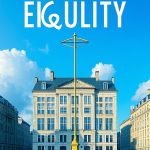Rapid urbanization and climate change necessitate innovative approaches to city planning. This article explores how sustainable design principles and green infrastructure are creating resilient, livable urban environments.
Vertical Farming and Mixed-Use Developments
Projects like Singapore’s Oasia Hotel integrate vertical gardens to improve air quality and reduce urban heat islands. Mixed-use developments combine residential, commercial, and recreational spaces, promoting walkability and reducing commuting distances.
Adaptive Reuse of Historic Buildings
Converting old factories into co-working spaces or warehouses into lofts preserves architectural heritage while meeting modern needs. The High Line in New York City exemplifies how repurposing infrastructure can revitalize neighborhoods.
Green Building Certifications
LEED and BREEAM standards drive energy efficiency through solar panels, rainwater harvesting systems, and sustainable materials. The Edge in Amsterdam, the world’s greenest office building, uses IoT sensors to optimize resource consumption.
Challenges in Implementation
High upfront costs and regulatory hurdles often hinder sustainable projects. Public-private partnerships and government incentives are critical to scaling these initiatives.
Conclusion
Sustainable urban development offers a blueprint for addressing housing shortages and environmental degradation. By prioritizing green design and community-centric planning, cities can become engines of economic growth and ecological stewardship.
















